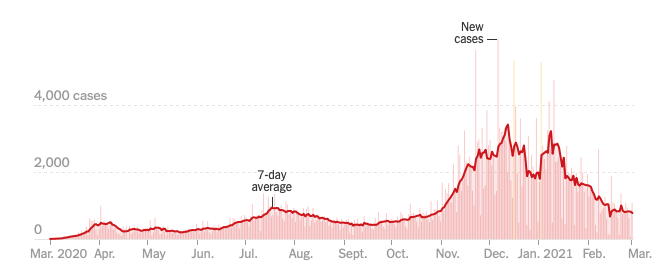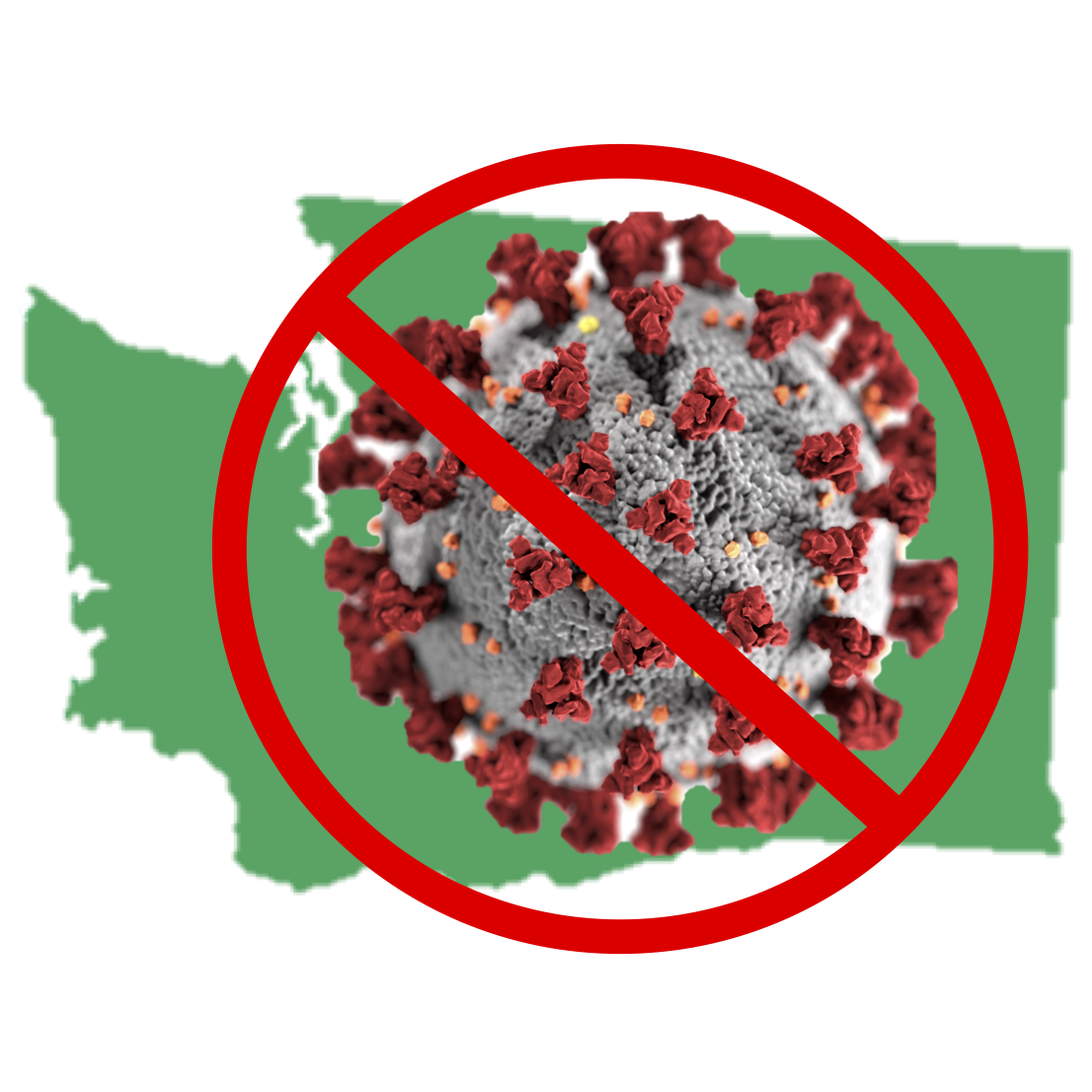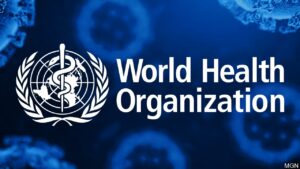(Note: This is adapted from my previous post on Zero COVID for the anniversary of the first COVID death.)
Never before has herd immunity through infection been put forward as a public health strategy for a serious disease. The result is a double disaster destroying lives and economies. It is not too late to change course. As the first state to suffer the effects of COVID-19, Washington should be the first to commit to and reach Zero COVID.
A year ago, when Washington saw America’s first death from COVID-19, eliminating the disease still seemed like an entirely reasonable goal. Three days earlier, President Trump had insisted that it would be gone or “down to close to zero” before March. Some countries even got there, but not by hoping for a miracle. Vietnam, New Zealand, Taiwan, and others demonstrated that a forceful, aggressive response could all but eradicate COVID-19. In America, the goal of eradication quickly gave way to public health policy founded in wishful thinking and bolstered by misinformation. Before long, rhetoric demonizing commonsense public health interventions spread like a poison, making the notion of Zero COVID a radical, if not entirely forgotten concept.
How did we get here? And how do we get back?

Why not zero covid?
Ironically, the far lower case-fatality rate of COVID-19, about 1%, has played a central role in making it so deadly. The fact that most cases are likely to survive inspired many politicians and public figures, and even a few epidemiologists, to contend that the Zero COVID strategy was just not worth it. Globally, the pandemic has cost 2.4 million lives. For comparison, SARS, with a case-fatality rate ten times higher, killed 811.
One rationale for not pursuing Zero Covid derives from the fact that younger age groups are less likely to experience severe disease. Allowing them to become infected, the logic goes, will increase the level of immunity in the population. The concept of herd immunity lies at the heart of infectious disease control. But the centerpiece of herd immunity has always been vaccination. In fact, public health experts have a term to describe reaching herd immunity through active infection.
Failure.
the risks of anything less
And the potential consequences of that failure are far from over. Letting COVID-19 spread while we slowly roll out a vaccine, is like a person with a bacterial infection taking antibiotics at too low a dose. It won’t kill all the bacteria and the ones that remain will be those with some capability to resist the antibiotic. Every time a person develops COVID-19, those virus strains most capable of replicating and transmitting infection to others will be selected. As time goes on, these new variants will look less and less like the virus used as the model for existing vaccines.
The tools of zero covid
So, how do we achieve zero-COVID. Let’s look at the strategy of those countries that have successfully pursued this approach. There are five key components.
- Masks:
Masks work. In fact, universal use of well-fitting masks is almost as effective as the best vaccine in preventing the spread of COVID-19. The countries most successful in stopping spread had near universal use of masks. Mandatory mask use will be central to any zero-COVID strategy. - Lockdowns:
The anti-lockdown rhetoric is deeply flawed and dangerous. This is a disease that spreads through human interaction. A well-executed lockdown could eliminate the disease in less than five weeks. That was at the core of the New Zealand’s strategy. It worked. - Testing:
Frequent, inexpensive testing could identify the most infectious cases before they expose anyone. Coupling pre-emptive testing with a thoughtfully considered lockdown strategy and ongoing vaccination will be a key part of a Zero-COVID strategy. - Travel Restrictions:
Once the cases within a region have been eliminated, the only source of new cases will be travelers. That means that inbound as well as returning travelers will need to be tested and quarantined. This is particularly daunting for non-island states and nations, but Germany is actively addressing this challenge. - Contact Tracing:
Zero COVID is a goal. Until all regions of the world have it under control, cases will emerge. It is essential that aggressive contact tracing along with quarantine be used to eliminate the potential for outbreaks to spread.
Zero COVID requires enlightened political leadership, an educated and morally responsible public, and the understanding that getting there is not a radical concept.
ZERO COVID NOW
This is all basic epidemiology (the kind they teach to actual epidemiologists). We simply need to do it. That requires enlightened political leadership, an educated and morally responsible public, and the understanding that getting to Zero-COVID is not a radical concept.
Washington was the first state in the nation to get to one death from COVID-19. Now, a year later, we should commit to using our tremendous scientific resources, excellent public health infrastructure, and enlightened leadership to making it the first state to Zero-COVID.



